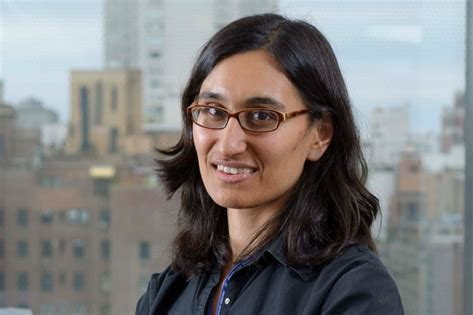Christina Leslie, Ph.D., a CSBC investigator at Memorial Sloan Kettering, trained as a mathematician in differential geometry and Lie theory. However, after graduate school, she moved into computational biology and cancer research.
In this interview, she describes her career path, systems biology approaches, and her recent findings related to immune cell heterogeneity in cancer.
Can you describe your career journey to computational biology?
For my undergraduate education in Canada, I attended the University of Waterloo, a school that is heavily oriented towards computer science and engineering. I had originally planned on studying engineering and applied math, but I fell in love with pure mathematics.
I decided to pursue a Ph.D. in mathematics at UC Berkeley, which was a fairly unusual choice for women at the time. I continued to appreciate the elegance of the subject and felt privileged to get such rigorous training. However, in terms of interactions with other disciplines, I came to view pure math as a field where everything goes in and nothing comes out. I wanted to have a broader impact on the rest of science.
After doing a postdoctoral fellowship in mathematics at Columbia University, I took a lecturer position in Columbia’s Computer Science department. This allowed me to transition to computational biology. I found that I really enjoyed machine learning, as it was more mathematical and geometric than other subfields of computer science. It also appealed to me more than traditional statistics.
The idea of training an algorithm on data to make accurate predictions seemed like the right problem to solve.
What advice from your own career experiences do you give to trainees?
It can be too easy to be distracted by the politics of science – trying to get into the right journal or strategizing about the right project. The important thing is to do good work and do good science.
For mathematically sophisticated students who are considering a switch into computational biology, the message is that there’s so much work to do if you are open-minded and willing to bring your expertise to biomedical problems. Biology urgently needs people with quantitative backgrounds.
Can you describe a computational approach developed by your lab that contributes to cancer systems biology?
Early on, we developed “string kernel” methods for classification problems involving biological sequences using support vector machines (SVMs). String kernels compute the similarity between pairs of amino acid or nucleic acid sequences based on shared occurrences of k-mers, i.e. length k subsequences. Combining string kernels with SVMs can be used to predict protein folds, the DNA binding affinity of transcription factors, or more complex regulatory elements.
More recently, we have been using supervised machine learning to train predictive gene regulation models by combining regulatory sequence information with gene expression measurements. Here, the point is to not only predict gene expression changes, but also to derive mechanistic information from the model.
In cancer, for example, we might be able to train gene regulation models on tumor profiling data and identify important transcription factors that are dysregulated downstream of specific driver mutations. We try to determine “actionable” information from our machine learning models to motivate follow-up experimental work.
Can you discuss your findings about T cell states during tumorigenesis?
In collaboration with Andrea Schietinger, we studied T cell state changes and how this differentiation process goes awry when T cells encounter cancer cells. We used ATAC-seq (an epigenomic assay that measures cell state at the level of chromatin accessibility) to study tumor-specific T cells in a mouse model of liver cancer.
Early after contact with cancer cells, we showed that tumor-specific T cells develop a plastic, dysfunctional state that can still be rescued by immunotherapy. However, only 14 days after interacting with tumor cells, these T cells adopt a fixed dysfunctional phenotype with a distinct chromatin accessibility state that can no longer be rescued by treatment.
Why is it important to study immune cell heterogeneity in cancer?
A breakthrough in cancer treatment is immunotherapy, which enhances T cell killing of tumor cells by suppressing inhibitory interactions. Yet, immunotherapy is only successful in a minority of cancer patients and is not effective against most types of tumors. Researchers need to determine why there are different responses to immunotherapy and reasons for immune cell dysfunction in tumors.
One focus of our CSBC center is using single-cell RNA sequencing to examine immune cell heterogeneity, checkpoint expression, and immune interactions in the tumor environment. By understanding mechanisms of impaired immune cell function, we can develop strategies to improve cancer immunotherapy.
